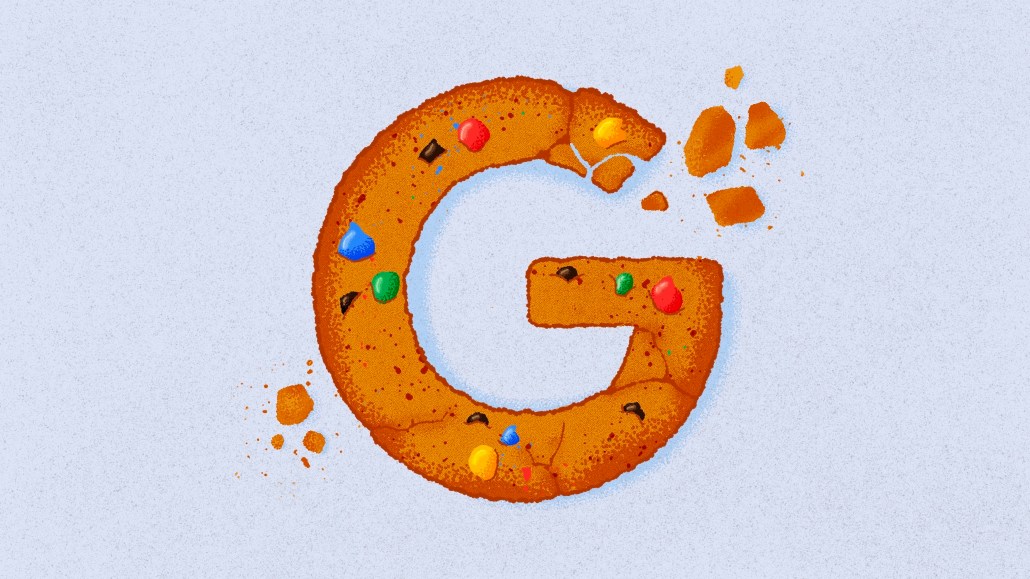Butler, Shine, Stern & Partners’ Trina Arnett previews the last-second scramble to prepare for post-cookie measurement

This article is part of a series covering our Programmatic Marketing Summit. More from the series →
The advertising industry appears set for a last-second scramble to adapt to a cookieless world if and when Google officially disables third-party cookies in its Chrome browser by the end of next year. That’s based on the conversations taking place during the Digiday Programmatic Marketing Summit in New Orleans this week. And in an onstage session, Butler, Shine, Stern & Partners head of marketing sciences Trina Arnett gave a preview of what that scramble will look like.
“I have a client that just pulled all of their [conversion] tags,” Arnett said. A healthcare brand, the client had gotten nervous about privacy lawsuits popping up in California and decided to stop using all tracking mechanisms, including cookies. “They basically pulled everything. So we’re back in 1994 world.”
The client made its decision within a matter of weeks, which has effectively kneecapped its measurement capabilities and optimization efforts in the near future.
“We have no conversion tags. We have no cookies. We can still do cookie[-based] targeting on the same of the media platforms. But we have no measurement…. We’re back to, like, are people clicking?” said Arnett.
Counting almost exclusively on clickthrough rates is challenging in its own right. But then there’s the added complication of clickthrough rates not always corresponding with conversion rates.
“We’ve done a little look at past years where, if we’re optimizing to that conversion, our clickthrough rate will go down. Because we might have viewthroughs and people that go around, but we’re still going to get the conversions,” Arnett said. “And now the only thing we can optimize to is that clickthrough rate. And so it’s like, I know that we’re sub-optimized.”
Fortunately for Arnett and her client, they can rely, to an extent, on historical marketing mix models to project future performance, and the client — which Arnett described as diligent in its measurement practices — is well aware of how tricky of a situation it put itself in by ripping off the cookie bandage so quickly. In an ideal world, there would have been more time to have cookie-based and cookieless measurements overlay to establish baselines to help bridge the two.
“Optimally, having that overlap would be great,” said Arnett.
Not ideal, obviously. Even less ideal is the likelihood that this client case study is indicative of what will become a broader trend around this time next year should Google stick to its end-of-2024 deadline to do away with third-party cookies in Chrome. Asked if her client example is representative of what may become commonplace in a year, Arnett said, “Honestly, I think so.”
“Kelly [Leger, managing director of advertising, marketing & commerce at Deloitte Digital] said [on stage during DPMS on Monday that] people aren’t prepared. And I agree with her. I’m just not seeing it,” she continued.
Arnett was far from the only DPMS attendee to not be seeing enough urgency across the industry to prepare for a post-cookie world (which will be the subject of a Digiday video to be published in the next week). That was also a hot topic of conversation during behind-closed-door town hall sessions with brand and agency executives. Which creates the conditions for what will likely be a last-second scramble in a year’s time.
And which adds something of a silver lining to the example of Arnett’s client: if it can prove educational for others ahead of that scramble. Asked how she can use the experience to smoothen out any upcoming scrambles, Arnett said that it comes down to agencies and clients having conversations about post-cookie preparations.
“See where they’re going, see where we can start moving things, and talking about other ways of measuring, doing a lot of test-and-learns to try to figure out lift from things. Even beyond just media, is it creative effectiveness? Those kinds of things that you can put in marketing mix models,” said Arnett.
Conversation is nice and all, but at some point, advertisers and their agencies will need to act, if only when Google finally pulls the plug. To bridge that gap from conversation to action, Arnett recommended having more action-oriented discussions, like suggesting identity graph providers and laying out options such as data clean rooms and customer data platforms. “What I do — and what I did even for the [healthcare] client — is I jumped on, and I’m like, ‘Okay, here’s all your options. Here’s providers.’ Even if I can just give you something that will get you started because I think it can be a really overwhelming thing.”
As overwhelming as it may be to get started, though, what may prove even more overwhelming in a year’s time is having not yet begun.
More in Marketing

Pandora is betting on AI agents to scale service and emotional selling during the peak holiday season
Pandora is using AI agents to scale customer service and replicate emotional in-store selling online, just as peak season puts pressure on margins and teams.

Rembrand’s CEO wants to grow virtual ad placements in streaming, and he’s looking elsewhere for models
Omar Tawakol wants to improve advertising within the streaming world, and is working with advertisers and publishers to improve that experience.

Marketers are keen to use generative AI in ad campaigns, but hidden costs lurk
Marketers across the industry want to use AI to cut down on time spent in creative production. It’s not so simple in practice.








